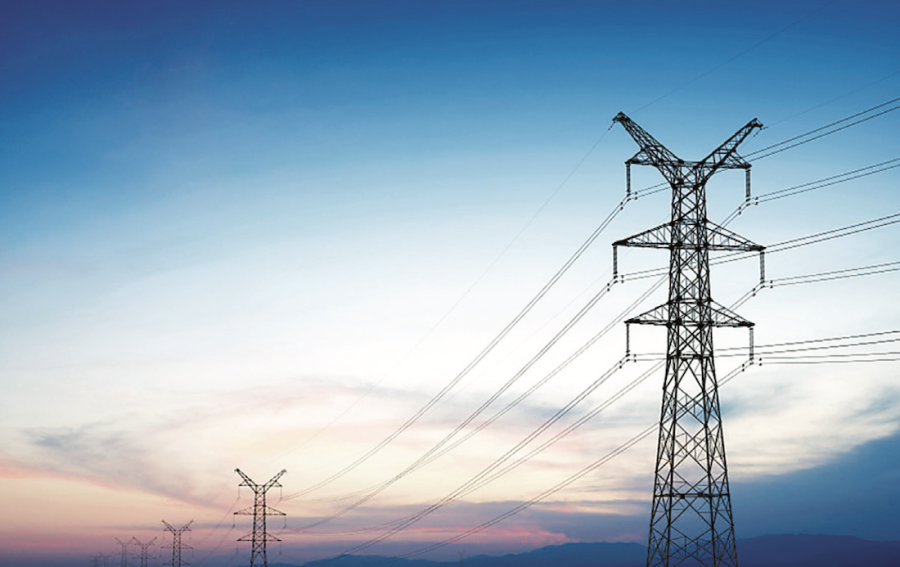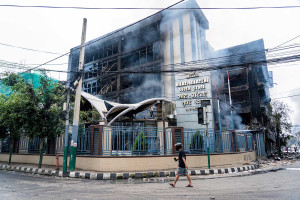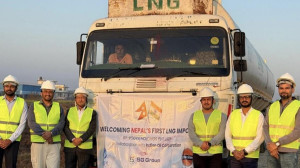Money
Lumbini industrialists alarmed after NEA renews pressure to clear old trunk line dues
Around 35 industries face pressure to pay Rs2.13 billion in disputed electricity charges.
Ghanshyam Gautam
The appointment of former Nepal Electricity Authority (NEA) executive director Kulman Ghising as the minister for energy and water resources in the interim government worries around 35 industrialists in Lumbini Province.
Their fear stems from Ghising’s first ministerial decision to collect long-pending dues related to the dedicated–trunk line dispute, which has remained unsettled for nearly six years between the industries and the power utility.
Even during his earlier tenure as NEA executive director, Ghising had pressed industries to pay their outstanding bills for the trunk line connection. The industrialists, however, maintain that they never requested for such dedicated lines and have been paying regular electricity tariffs, refusing to clear the disputed dues.
According to the NEA, 35 industries based in Rupandehi and Nawalparasi under the Lumbini Industrial Corridor—and also those spread across Bhairahawa, Butwal, Kapilvastu, Dang, Nepalgunj, and Rolpa—owe a combined Rs2.13 billion in unpaid trunk line fees.
Among them, Arghakhanchi Cement owes the highest amount—Rs448.4 million—while Narayan Rubber Industry owes the least—Rs156,000.
The NEA says the dues pertain to the consumption of trunk line electricity between January 2016 and April 2018. During that time, industries had access to electricity 24 hours while the nationwide power outage averaged over sixteen hours daily at its worst.
The industrialists, however, argue that they neither requested nor used the trunk line during the power crisis.
The NEA only issued the related bills in December 2020 and has since demanded payment with additional fees, worsening the dispute.
As the disagreement persisted, the Ministry of Finance last year mediated a negotiation between the NEA and the industrialists. Both parties agreed that the industries unable to make a lump-sum payment for the electricity used during the 28-month load-shedding period would clear the dues in 28 monthly installments.
But according to the NEA’s Bhairahawa Distribution Centre, only a few firms complied, while most have continued to delay payment.
Sanjay Kumar Mishra, chief of the NEA’s Bhairahawa Distribution Centre, said no official letter regarding the new decision has yet arrived. “We’ve heard that the new minister, who is also the former executive director, has decided to collect the dues, but we haven’t received an official notice yet,” he said.
“Once we do, we’ll move forward with its implementation. The NEA works in the interest of both the authority and the industries, so there’s no reason for anyone to panic.”
Baburam Bohora, former president of the Rupandehi Chamber of Commerce and Industries, said the dispute has escalated because the NEA set the trunk line charges outside the parameters defined by its own regulations.
“According to the NEA’s guidelines, the trunk line charge applies only when a plant consumes more than 20 hours of electricity a day during a load-shedding period of over six hours—and only if the industry formally applied for the connection,” he said.
“But the NEA forcibly declared certain connections as trunk lines and began demanding payments.”
Bohora added that with the economy already under stress, the NEA’s renewed push to collect these dues has terrified industries struggling to stay afloat.
“This will obstruct industrial growth and economic recovery,” he said. “We are only asking for justice. Even the finance ministry-mediated agreement has not been implemented because the NEA has resisted it since Ghising became minister again. We cannot pay for something we never requested—if forced, we’d rather shut down our industries.”
Krishna Prasad Sharma, president of the Lumbini provincial chapter of the Federation of Nepalese Chambers of Commerce and Industry (FNCCI), said that the private sector has already suffered heavy losses during political unrest and vandalism, and now the trunk line issue is further eroding business confidence.
“Instead of assuring peace and security and fostering an investment-friendly environment, the government is prioritising the trunk line issue,” Sharma said. “This has not only worried the industrialists but also created fear. The government and the NEA must pursue dialogue and consensus so that the solution is fair to the industries. Otherwise, industrialists might be forced to hand over their factory keys to the government.”
The industrialists have urged the authorities to implement the report of the Lal Commission and to treat industries in the Lumbini Industrial Corridor differently from those in other regions, given their specific circumstances.
The then-government had formed a commission to resolve the billing dispute regarding dedicated feeders and trunk lines.
The commission, led by former judge Girish Chandra Lal, was set up on January 9, 2024. It submitted its findings to the ministry on May 5 last year. It, however, was made public in November.
In its findings, the Commission stated that arrears related to the dedicated feeders and trunk lines would be collected based on Time of Day meters.
Industrialists also point out that since 2016, the NEA’s own rules prohibit granting dedicated or trunk lines to any industry or institution unless the NEA board of directors approves it.
Despite that, they claim the NEA suddenly revived the issue in 2021, demanding payments for alleged trunk line use between 2017 and 2019 in the Bhairahawa–Butwal corridor—without any evidence of request or consumption.




 13.12°C Kathmandu
13.12°C Kathmandu













%20(1).jpg&w=300&height=200)
